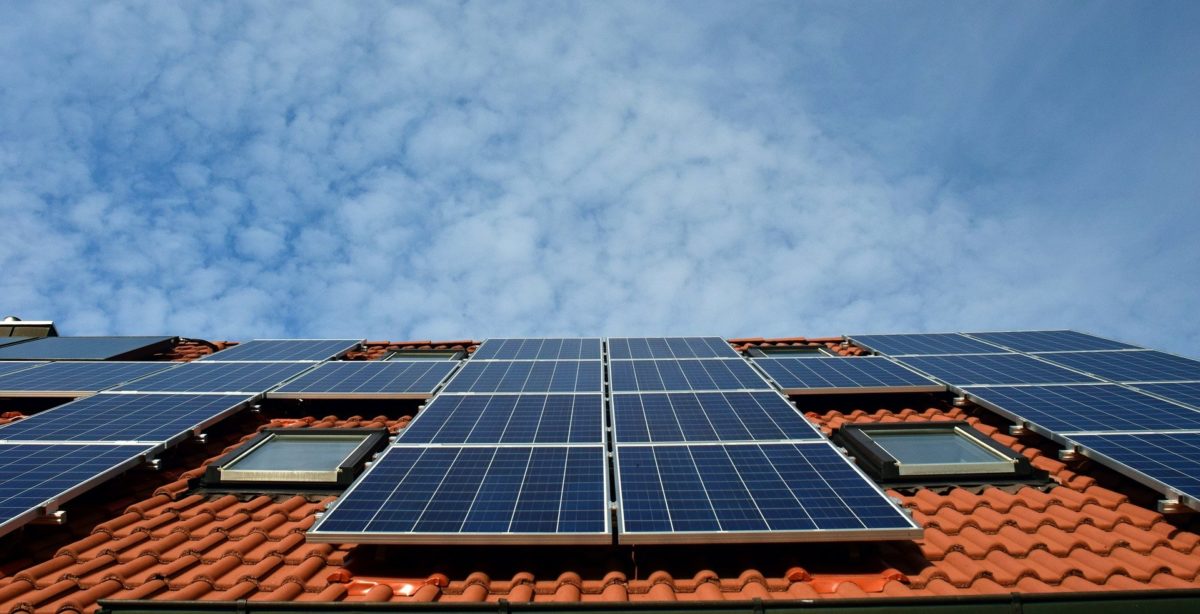A coalition of three environmental groups have filed a lawsuit against the California Public Utilities Commission (CPUC) for instituting a rulemaking decision that rapidly and sharply slashes payments to rooftop solar owners for exporting clean energy to the grid.
The Environmental Working Group, the Protect our Communities Coalition and the Center for Biological Diversity filed a petition with the California Court of Appeal to review the state’s new Net Energy Metering 3.0 policy.
In December 2022, CPUC decided to pass NEM 3.0, reducing payments for exported solar energy by up to 80%.
The petition said the rulemaking violates the state’s climate laws and improperly evaluates the many benefits of small-scale, distributed solar on rooftops, while ignoring the billions of dollars utilities spend on transmission infrastructure that drives increased rates. Benefits of rooftop solar include reduced greenhouse gas emissions, resilience to extreme weather and power outages, and avoided land use impacts by decreasing the need for utility transmission infrastructure which also keeps electricity bills down.
The lawsuit directly names the three large investor-owned utility companies, Pacific Gas and Electric Company, Southern California Edison, and San Diego Gas and Electric Company, as the real parties in interest.
The decision adopted an investor-owned utility-developed avoided cost calculator to set rates. NEM 3.0 was implemented on April 15, and has worsened the return on investment for rooftop solar, particularly when not paired with energy storage.
The state was the tip of the spear for the rooftop solar industry across the United States, representing about 50% of the market, and now that spear is blunted. Wood Mackenzie and the Solar Energy Industries Association (SEIA) project that new residential solar installations in California are expected to decrease by nearly 40% through 2024, after doubling in 2020 to 2022.
“The commission’s misguided new policy violates California’s climate laws and will stifle rooftop solar growth, especially for working-class families,” said Roger Lin, an attorney at the Center for Biological Diversity. “It’s outrageous that the commission is slow-walking our renewable energy transition when we need to be racing toward it.”
The petitioners said NEM 3.0 contained numerous legal errors and false assumptions, and that the Court must reverse the decision, grant review, and remand the issue with instructions to comply with the legislatures requirements to fully and properly evaluate NEM’s costs and benefits.
Why cut solar?
The petition highlights methods utilities are using across the country to block rooftop solar as distributed energy resources threaten the utility profiteering. A report from the Center for Biological Diversity evaluates rooftop solar and net-metering benefits and why corporate utility companies are trying to kill these programs.
The rulemaking decision was justified based on an analysis that suggested non-rooftop solar customers were subsidizing their neighbors that decided to invest in the clean energy transition.
However, this utility-forwarded cost shift argument has been debunked. Lawrence Berkeley Laboratory found that 47 states have a negligible solar power cost shift. Most states have solar penetration levels far below 10%. Until you hit that level of penetration there’s no cost shift altogether, yet states across the country are following California’s footsteps in slashing net metering.
Even at penetration levels of 10% or higher, the national laboratory found that the “shift” is only 5/1,000 of a cent per kilowatt-hour. Sixteen state-level analyses have come to the same conclusion that the cost shift is negligible.
“If the goal is to keep prices low, there are other pieces of the puzzle that affect rates far more than net metering,” Galen L. Barbose, a research scientist at LBNL, echoing a study by LBNL which put this in context. “Carbon pricing, operating outdated plants—those are the issues utilities and regulators should be focused on.”
More trouble ahead
What’s more, the state’s Public Advisor’s Office (PAO), following state procedures that require it to equitably balance the resource cost demands of the major investor-owned utilities, has recommended a fixed utility bill fee for all Californians based on income.
PAO’s recommendation assigns customers with fixed monthly fees between $22 per month and $42 per month, while some utility proposals under review would assess fees as high as $128 per month for California residents. This proposal would even apply to rooftop solar customers who consume zero electricity from the grid.
“In just about every case, if you are a low electricity user today, with a relatively low bill, you are going to see a higher bill once this plan is in place,” said Ahmad Faruqui, economist-at-large, grid controls expert, and California resident.
“Customers will be very irritated,” said Faruqui. “They will be paying more for electricity not because their behavior changed but because California is changing the rules.”
This content is protected by copyright and may not be reused. If you want to cooperate with us and would like to reuse some of our content, please contact: editors@pv-magazine.com.









If the suit gains traction, we can hope that the CPUC will be guided back to effective use of market forces to mobilize consumer liquidity for energy transition. It’s sad that equity for rooftop solar adopters got lost in a fog of the IOUs’ soapselling and TURN’s Marxism.
Don’t worry the government is here to help – biden 2020.
😂 😂 😂 Just repeat that while you get *ss r*pe by the same people that say they want to help you. Good luck reversing this now. 😂 😂 😂
Riddle me this… Why have The Utility Reform Network and the Office of Ratepayer advocates put forward the cost shift argument? Here’s some testimony from TURN that doesn’t mince words.
“The results of the NEM 2.0 Lookback Study demonstrate the massive cost shift associated with both the NEM 1.0 and 2.0 tariffs, the failure of NEM customers to adequately contribute to their cost of service, and the oversubsidization of participants. These results highlight the importance of major reforms to balance the interests of participants and non-participants.”
https://fixthecostshift.com/wp-content/uploads/2021/06/R2008020_TURN_Chait_directtestimony_ExTURN1_061821.pdf
How is it that the Rooftop PV advocates can’t hear what TURN is saying?
In Q1 of 2023, 200 MW of residential solar was installed in PG&E’s territory. The average system size was 7.3 kW. This sizing is consistent with the historical pattern in California up to now.
https://www.californiadgstats.ca.gov/
https://www.solarreviews.com/blog/what-is-the-right-size-solar-array-for-my-home
Note that a 7.3 kW system will generate over 11,000 kWh per year. This is about the average annual consumption for the US as a whole but it’s nearly double the average usage in California. Now, consider PV systems are typically sized to deliver 100% of annual consumption – i.e. The average PV install in California is on a home that consumes over 11,000 kWh per year of electricity.
Here is a document that shows the relationship between household income and electricity consumption in California. It clearly shows that rich homes, on average, use twice as much electricity and natural gas as poor homes. See page 29 where homes using 11,000 kWh per year have a household income of $250,000+. Do these sound like working-class households?
https://www.energy.ca.gov/sites/default/files/2021-08/CEC-200-2021-005-PO.pdf
There is over 4.4 GW of residential rooftop solar that generates roughly 23% of PG&E’s annual residential electricity demand. If you think about the way tiered billing works, the 23% of consumption translates to a higher percentage of revenue – i.e. The 15% of PG&E’s customers who have solar represented close to 30% of PG&E’s residential revenues prior to PV + NEM. This represents a massive cost shift.
My solar panels generate more power than I use. I feed a considerable amount to the grid yet have seen no compensation for it. Legal theft.
I wholly support this lawsuit and, at the same time, sad it has come to this. Did the Big Three really think price gouging wouldn’t be noticed??
Next we need to make sure that the suggested fixed base rates the California power companies are recommending (under the guise of helping low income households) doesn’t impact solar powered homes. Why on earth would I pay the utility company for a service they never provide?!
Well The people in California voted for Marxism and now they’re getting it. If you’re stupid and you vote for something with a D next to it this is what you get.
Wow! My net metering total report went from -$214 last month to +$34 this month. I can hardly wait until next month to see what happens.
(I have no batteries — guess I’m in a use it or lose it situation!)
The proposal to charge consumers based on their income is great for the utilities, so that they will have guaranteed income regardless of how much energy they deliver. What if the same happened at the grocery store (charge income-based $10 – 150 to enter the store, before the cost of groceries), restaurants charge more based on your income, etc. Definitely doesn’t seem like American capitalism. Then, there’s the law of unintended consequences. Those charged the highest rates will be incentivized to install batteries and completely disconnect from the grid. Whole neighborhoods could go off-grid with roof-top solar and mid-size battery packs. That could result in even higher costs for lower income consumers that would be forced to cover the utilities fixed costs. What should we do instead? Consider the do nothing alternative, or allow true competition (no exclusivity for single utilities, allow others to install their cables).
It’s really something to see the utility plutocracies justifying a punitive tax that essentially preserves their monopoly in terms of some ridiculous notion that solar users are elitist and they’re actually soaking the poor for the cost of their solar systems. Hah! The entire goal of this is to render solar cost ineffective so that nobody in their right mind would invest in it, This protects the utilities monopoly and there is no other reason for it period.
Higher-income households have significantly higher total energy consumption relative to low and medium-income households. Additionally, they have a higher ratio of peak load (kWp) relative to total consumption (kWh).
These are exactly the customers who should be paying higher fixed fees.
That’s crazy thinking. If those higher income households are using significantly more, and during peak times, then just charging them more based on higher use will satisfy what’s needed. But with the crazy idea to charge higher fixed rate based on income levels, the people that went solar, and use very little from the electric company, will now be paying more, and also subsidizing low income households, which will be paying less fixed rate, and also lower per-use rate, which will just lead them to use/waste even more electricity at a time we want the opposite happening. The higher income household will just add battery storage and go off the grid for their electrical needs. And that will then mean higher rates – both fixed, and per-usage, for the lower/middle income households that didn’t go solar. Also the opposite of what they say they want to do.
The bigger problem is that if this goes forward, the other utilities will try to do the same. What happens if the gas stations also do this? Earn less than $20,000/year, and you get $1/gallon off the price of your gas?
This is one of the biggest Socialist moves I think I’ve seen in a very long time.
How do I get in on the lawsuit?? PG & E just in formed me that I have over produced by $1283 this year. For that they are giving me a $160 credit! Damn it!!
PG&E are passing bills to the homeowners in the form of balloon payments. Mandatory solar on new homes do not supply a lot of electricity but PG&E uses it to force these large payments at years end. It makes solar not useful in fact it in effect makes subsidies to non solar homes because, electricity uses can get different plans and they can use electricity at different times with different rates. It’s an unfair practice.